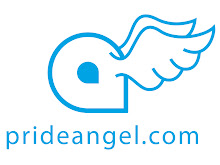Wednesday, 16 July 2014
Single mum went to Danish sperm bank for Blonde blue eyed baby
As Jessica McCallin smiles down at her little girl, there is no mistaking the family resemblance.
The pair share the same fair hair, blue eyes and broad smile – which makes it even more remarkable that three-year-old Freya was conceived using a sperm donor almost 800 miles away in Denmark and Jessica has absolutely no idea who the father is.
Far from being unusual, hers is a decision that increasing numbers of British women are making. Approaching 40, single and with her body clock ticking, Jessica knew time was running out for her to become a mother. So she decided that the answer was to spend £480 on sperm from a Danish donor.
“Being a single mother wasn’t what I wanted, hoped for or dreamt of. But not being a mother was unendurable,” says Jessica, 40. With a growing demand from British women for donor fathers and lack of red tape in Scandanavia compared to the UK, sales of Danish sperm are soaring, with the European Sperm Bank, one of the largest in Denmark, reporting a 20% surge in online sales to the UK in the last year.
For Jessica the decision made perfect sense. “I chose to use a Danish donor because I knew the characteristics of the child would be similar to mine. People always ask me if I’m Swedish and a lot of the research I read said it can help if the child looks as much like you as possible. I know my family originates from the north of England, which was once conquered by the Norsemen, so it’s reasonable to assume I have Scandinavian ancestry. The Viking aspect had a certain appeal.”
Coupled with the fact that there simply aren’t enough donors in the UK to meet demand, or the same level of clinical infrastructure, it is little wonder that Danish sperm now accounts for a third of the total used in the UK.
Sperm, along with beer and Lego, has become one of Denmark’s top exports and Freya could soon have more in common with her peers than previously might have been expected. “With more and more women seeking Danish sperm, there’s going to be lots of children with Danish ancestry about,” says Jessica. “I think it’s something that’s going to become reasonably common and also more socially acceptable.”
Jessica, who, by coincidence, lives in Denmark Hill, South London, had always wanted children. But it wasn’t until she hit her 30s that she realised that, as a single woman, her options for carrying a baby were limited.
“I didn’t really think about starting a family in my 20s, but when I got to 32 I knew I wanted to do it,” she says. “There were no significant men in my life – my most serious relationship was in my 20s and we did talk about children but that all fell apart when I was 28. I have some gay friends who always said if no one came along we could have a child together, but for various reasons they weren’t quite ready when I was.”
As her 35th birthday came and went, Jessica found herself reading articles about female fertility dropping after that age. It was then that she began researching the possibility of using donor sperm and discussed the idea with family and friends.
“It was a Danish friend who suggested I go to Denmark. I had overwhelming support from family and friends and I was quite surprised about that,” says Jessica, a writer.
“Everyone was extremely supportive with the exception of one friend who felt children need fathers – the others all thought I was worrying too much about the absence of a father.”
It wasn’t just that playing on Jessica’s mind, however. She knew that if she used a Danish donor then her baby would never even know his name. Sperm donors in Denmark have a legal right to remain anonymous and can’t be traced, whereas in the UK a law was passed in 2005 saying a donor may be contacted by their offspring when they turn 18. The change sent the number of donors plummeting.
“It was the complete black hole in a child’s life about never knowing the name of the father that worried me,” says Jessica. “But I came to the conclusion that knowing the name of the donor wouldn’t necessarily help because I had read that it can be a disappointment for donor children who do trace and meet their fathers because they’ve built up an image in their mind then the man turns about to be nothing like the person they expected, so they feel let down.”
Despite her concerns, Jessica decided the time was right to become a mother. “I’ve always pretty much been single and I’ve never lived with anyone. It was normal for me. I was ready to have a baby and didn’t mind doing it on my own.”
So, in June 2010, as a 36th birthday present to herself, Jessica travelled to Copenhagen to be inseminated with sperm from an anonymous donor. She says: “Although friends and family offered to come with me, I went on my own because when you track your ovulation you only know the “right” time at the last minute, so there wasn’t much notice.
“The process was incredibly straightforward. I contacted the clinic, they sent me a questionnaire and conducted a phone interview to be sure I knew what I was doing and had thought it through and that was it. I paid £480 for the sperm and it cost around £1,000 in total for my two-day stay including travel. I was confident I’d considered enough of the issues and was very excited.”
Although she had access to her donor’s profile, Jessica chose not to see it. She says: “I know nothing about him other than he’s a young Danish man screened for major genetic diseases and has fast swimming sperm. The clinics have basic information about the donors like their job but I didn’t ask for this because I don’t feel that it tells you anything meaningful about a person. With everyone in my family being tall, fair and with blue or green eyes, I just asked for a donor with a similar profile.”
Knowing the chances were that insemination wouldn’t work the first time, Jessica had prepared herself for several trips to Denmark – trips she never needed to make. “I know it sounds silly but I just knew the insemination had worked the afternoon after they had done it. I wasn’t surprised when the pregnancy test was positive and I was absolutely delighted.” Jessica’s excitement was shared by her mother, father, brother and three younger sisters who all helped out during the pregnancy.
Read more...
Subscribe to:
Post Comments (Atom)



No comments:
Post a Comment